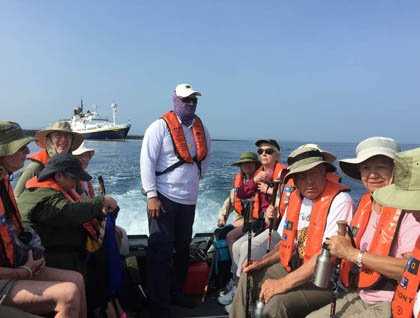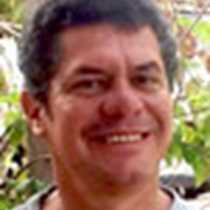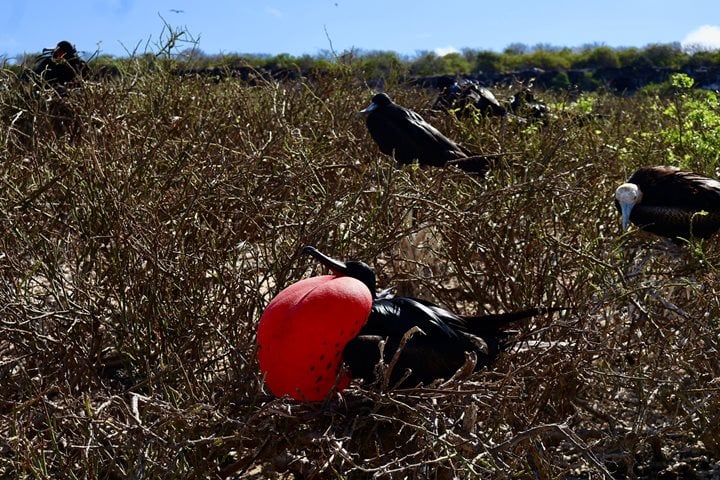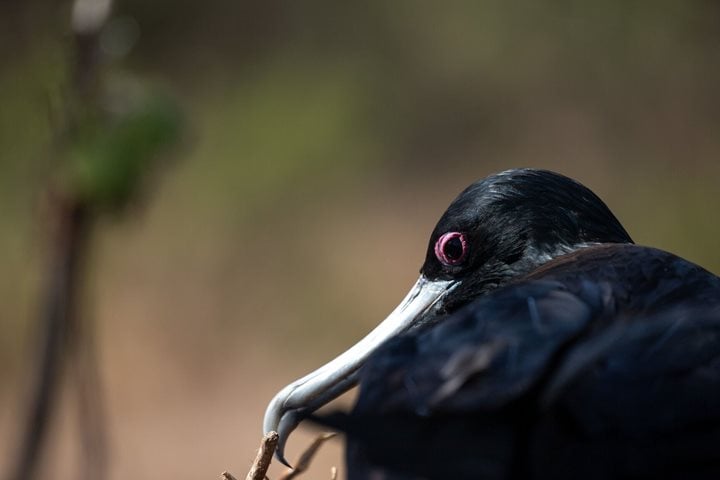For many of our guests, the day began early with a stretching exercise with our wellness instructor; it’s such a good idea to start the day with exercise, and our guests really enjoy this service on board. After a healthy breakfast we landed on North Seymour, which is an uplifted island. This means that the sea floor was raised suddenly, due to lava cracking the ground instead of opening as a crater, and therefore raising it up to occupy the empty space. This process occurs often here, and during the week we will visit two other uplifts in the western area of Galapagos: Punta Espinosa and Urbina.
There are many varieties of creatures to be seen here. Our walk began with swallow-tailed gulls and California sea lions along the sandy path, as well as blue-footed boobies, land iguanas, yellow warblers, great and magnificent frigatebirds, and the smallest subspecies of marine iguanas in the archipelago. North Seymour is the only island of the archipelago where both species of frigatebirds nest together. This is unusual, as one is pelagic while the other roams only within the archipelago. Frigates are kleptoparasitic, which means they make a living by stealing from others--I’m sure everybody knows someone like that! Frigates are incredible in that are not water proof, and for a seabird this poses severe challenges, because if they land on the ocean, the water will be absorbed by their feathers and they will drown. They have given up being water proof in order to become the lightest birds and therefore the best fliers, something that is quite useful if you are a thief. Some frigates have been documented to be aloft in the open ocean for up to 12 days.
In the afternoon, we snorkeled and visited Jervis, or Rabida Island, which is red due to the rusting of the iron found in the lava. It has been a great day, and our adventure continues tomorrow as we head towards the western region of the Galapagos archipelago.







